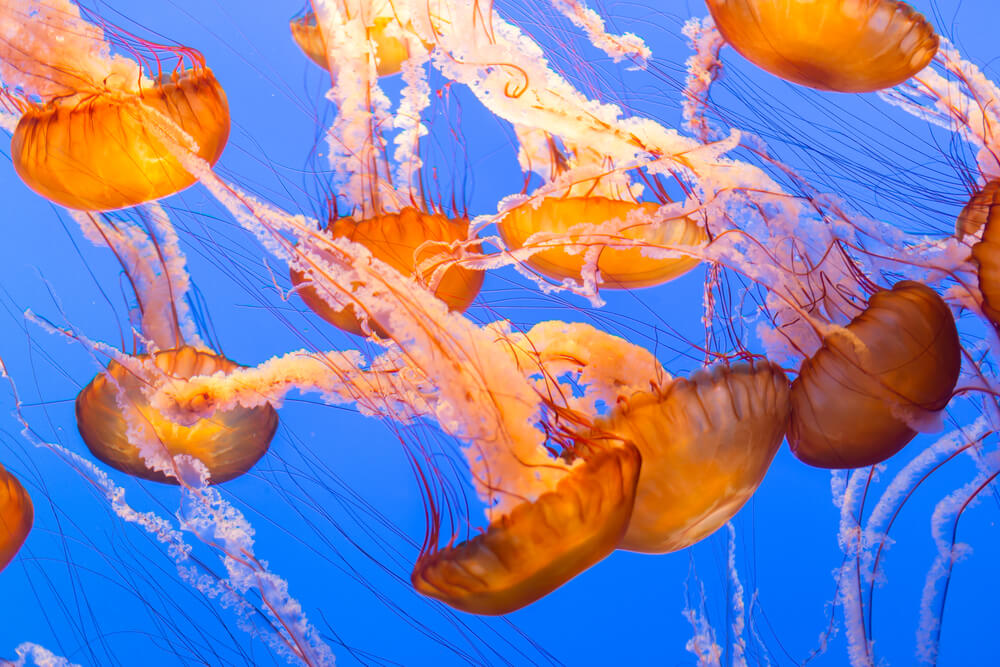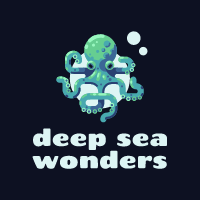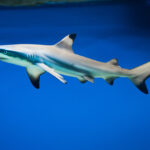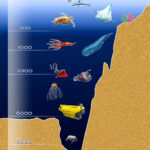The black sea nettle Scientifically known as Chrysaora achlyos Or sometimes called the black jellyfish is a type of deep-sea jellyfish found in the Pacific Ocean! Let’s Discover its details now!
Chrysaora achlyos
Pacific Ocean
Smaller fish, Crustaceans,other jellies
Animal Type
Jellyfish
Size
1 meter.
Depth
Surface to 100 meters in open waters.
The History Of The Black Sea Nettle:
The black sea nettle was first discovered in 1997, because they are rarely spotted in the wild as they roam calm deep waters. Their name Chrysaora is from Greek mythology referring to the brother of Pegasus in Greek mythology. And The name Achylos means darkness and obscurity due to the species’ coloration and the rarity of the sightings.

Habitat:
They are found in Pacific Ocean off North America from Monterey Bay in the north, down to southern Baja California and Mexico. It’s also seen in British Columbia. Found in the open waters exclusively.
Appearance and Size Of The Black Sea Nettle:
They can grow really big with a bell diameter to up to 1 meter and external arms of 5 or even 6 meters. The color of the bell is dark purple to black with the margin having a lighter brown pattern. This is unique to the jellies of the Pacific. They also have four gonads attached to finger-like projections. Marginal sense organs are spaced around the bell margin after every set of 3 tentacles, for a total of 8. The mouth is located at the center of the body with a cavity used for digestion. The presence of tentacles around the mouth is used to capture food as in most species. They have no respiratory organs.

Feeding And Diet:
They eat Gelatinous zooplankton, larval fishes, planktonic crustaceans, fish eggs, pelagic tunicates, ctenophores, and other jellies.



Behavior And LifeSpan:
The black sea nettles have thousands of microscopic nematocysts with each one paired triggers with a capsule containing a coiled stinging filament. These triggers will release toxins upon contact to paralyze the prey or kill them. Their stomach is lined with a network of vessels that attach themselves to a network of vessels for quick digestion of the prey. They can live from 6 to 12 months.
Black Sea Nettle Jellyfish Facts:
-They are the largest discovered species of jellies in the last century.
-It provides food and protection for the pufferfish as it hides in its bell when in danger and feeds on the jelly gathered by the black sea nettle.
This is truly a creature of wonder, as it’ among the rarest jellies on earth!
Other DeepSea Creatures:
Deep Sea Lumpfish: Nature’s Underwater Oddity
Discover the Mystery of Goosefish: Masters of Camouflage
Clingfish: Uncovering the Diversity and Adaptability of These Small Marine Creatures
The deep-sea Batfish: A Weird and Wonderful Underwater Creature
A Fish of Distinction: Exploring the Enigmatic John Dory
Incredible Adaptations of Deep Sea Frogfish: A Closer Look
The long-horned cowfish: a bizarre small fish!
Everything You Need to Know About Needlefish
The Banggai Cardinalfish: A True Marvel Of Coloration
Discovering the Enigmatic Striped Burrfish
The Deep Sea Ghost Shark: The Living Fossil
The Whalefish: The Deep Dark-Dwelling Fish
Stoplight Loosejaw: The Bottom-Dwelling Dragonfish
The Glass Squid: The Transparent Deep Squid
The Owlfish: The Monster With Large Eyes
Secrets Of The Deep: The Black Sea Nettle
Exploring the World of Snipe Eel
The Pacific Hagfish: Nature’s Slime Prodigy
The Basket Star: Nature’s Living Tapestry
Unveiling the Enchanting World of Firefly Squid
Discover the Enchanting Flapjack Octopus
Discover the Fascinating Longspine Snipefish
Exploring the Elegance and Mystery of The Blacktip Reef Shark







Leave a Reply